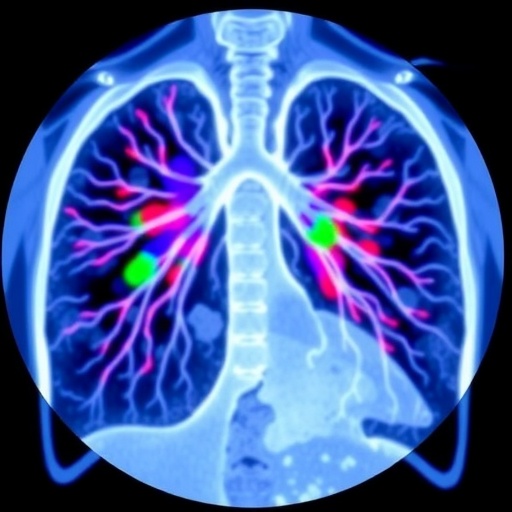In recent years, a significant transformation has been unfolding in the birthing landscape across the United States, particularly accelerated by the global COVID-19 pandemic. A growing number of pregnant individuals are opting to deliver their babies outside hospital settings, choosing the comfort and perceived safety of their own homes. This paradigm shift is highlighted by comprehensive research conducted by a team at Cincinnati Children’s Hospital Medical Center, which presents an in-depth analysis of planned out-of-hospital (OOH) births and their evolving characteristics from 2018 through late 2023. The findings were unveiled at the American Academy of Pediatrics 2025 National Conference & Exhibition, shedding light on this burgeoning trend and its nuanced implications on maternal and neonatal health.
The research reveals that the rate of planned OOH births in the Cincinnati region has doubled post-pandemic, rising from 1.5% before April 2020 to 3.0% by the end of 2023. This increase notably disrupts prior norms, where hospital births overwhelmingly dominated the landscape due to perceived clinical safety and accessibility of emergency care. The backdrop of the pandemic likely catalyzed this shift, as expectant parents grappled with hospital policies limiting visitors and potential exposure to SARS-CoV-2, alongside broader reassessments of healthcare venues during crises.
What distinguishes this research is its rigorous, retrospective cohort design, incorporating birth certificate and vital statistics data from the Ohio Department of Health. By contrasting pre-pandemic (January 2018-February 2020) and post-pandemic (April 2020-December 2023) periods, the study delineates sociodemographic changes and clinical risk factors characterizing these OOH births. Statistical analyses such as Wilcoxon rank sum tests and Chi-square tests affirm the significance of observed differences, lending robustness to the conclusions drawn.
Among the most striking sociodemographic findings is the composition of the population increasingly choosing OOH births. Post-pandemic data show a statistically significant rise in mothers identifying as Black, Asian, and Hispanic, marking a demographic diversification of those opting for home deliveries. Furthermore, these mothers tend to be younger on average, yet paradoxically more highly educated, with many having achieved at least a high school diploma or higher degrees, including collegiate and graduate education. This complex profile challenges stereotypical assumptions regarding home birth clientele and suggests a nuanced reevaluation of birthing preferences across different social strata.
Clinically, the study identifies shifts in maternal health profiles, particularly an increase in overweight and obese classifications post-pandemic among the OOH birth cohort. While maternal obesity is a known risk factor for adverse perinatal outcomes—such as gestational diabetes, preeclampsia, and fetal macrosomia—the neonatal outcomes in the study remained largely unchanged between cohorts, which is a reassuring finding. Notably, there was a decrease in the number of prenatal visits among the post-pandemic group. Reduced antenatal care frequency may raise concerns regarding the early detection and management of potential complications, underscoring the need for nuanced risk assessments and resource allocation for OOH birthing communities.
Despite these risk profile alterations, the rates of neonatal adverse events, including birth injuries, respiratory complications, and mortality, did not increase in the post-pandemic OOH birth population. This suggests that, although more mothers with potential risk factors are choosing out-of-hospital settings, neonatal safety outcomes remain comparable to those seen before the pandemic. However, it is critical to emphasize the American College of Obstetricians and Gynecologists (ACOG) recommendations, which advocate for stringent selection criteria for planned home births. These include low maternal health risk, term singleton pregnancies, and cephalic fetal presentation, as deviations from these may increase neonatal morbidity and mortality.
The ongoing challenge illuminated by this research is balancing expectant parents’ autonomy in choosing their birth setting with clinical guidelines designed to optimize maternal and neonatal safety. The closure of rural hospitals and clinics, exacerbated by federal Medicaid funding cuts, may be influencing decisions, as access to conventional obstetric care becomes increasingly limited in some regions. This factor, coupled with a rising preference for personalized birth experiences, contributes to the complex calculus families undertake when deciding on birth location.
Detailed analysis from the Cincinnati Children’s cohort also highlights variations in the administration of ocular prophylaxis to newborns. The post-pandemic OOH group demonstrated a higher refusal rate of prophylactic agents intended to prevent neonatal conjunctivitis. This trend invites a broader discourse on informed consent, preventative care in home settings, and the cultural or philosophical beliefs guiding parental choices in neonatal care practices.
It is imperative to contextualize these findings within the broader framework of maternal-fetal medicine and neonatal intensive care. Emergency preparedness for higher-risk births outside hospitals demands robust community-based systems, including skilled birth attendants, prompt transport protocols, and rapid access to neonatal intensive care units (NICUs) when complications arise. As such, interdisciplinary approaches combining obstetrics, neonatology, and public health are essential to cater to the evolving birthing populace.
The authors caution that as the profile of planned OOH births continues to shift, ongoing surveillance and research are critical. Comparative studies assessing matched cohorts of in-hospital versus OOH births will provide greater granularity regarding outcomes and risk-benefit balances. Such evidence is necessary to inform clinical guidelines, policy decisions, and patient education efforts, ensuring that expansion in alternative birthing options does not compromise neonatal and maternal health outcomes.
In conclusion, the doubling of planned out-of-hospital births in the Cincinnati region from 2018 through 2023 represents a significant change within maternal-child health dynamics, influenced by multifaceted demographic, social, and systemic factors. While changes in maternal risk profiles raise potential safety considerations, reassuringly, neonatal outcomes have remained stable. This underscores the complexity of birth planning choices in the modern healthcare environment and highlights the ongoing need for comprehensive, data-driven approaches to childbirth across diverse populations.
Contact authors and researchers involved in this groundbreaking study at Cincinnati Children’s Hospital Medical Center provide crucial insights to the medical community and expectant families alike. Their work stands as a testament to the importance of adapting healthcare delivery models to evolving societal trends, while maintaining rigorous standards of safety and care.
The ripple effects of this trend, observable across multiple regions and healthcare systems, denote a new frontier in obstetric care—one that blends traditional hospital resources with autonomous birth planning and informed patient choice. As maternal and neonatal health professionals embrace these changes, ongoing research will be vital in tailoring care to ensure both safety and respect for birthing preferences in a rapidly shifting landscape.
Subject of Research: People
Article Title: Expecting Mothers Increasingly Turn to At-Home Births: New Research
News Publication Date: 26-Sep-2025
Keywords: Pregnancy; Health care delivery
Tags: American Academy of Pediatrics conferenceat-home births trendbirthing landscape transformationCincinnati Children’s Hospital researchCOVID-19 impact on birthsexpectant mothers choiceshealthcare venue reassessmenthome birth safety perceptionsmaternal health insightsneonatal health outcomesplanned out-of-hospital birthspost-pandemic birth statistics





